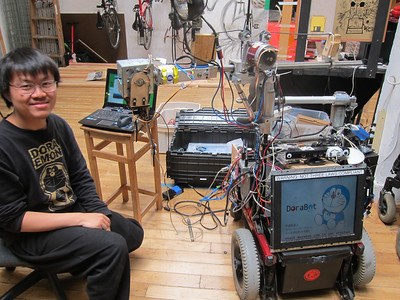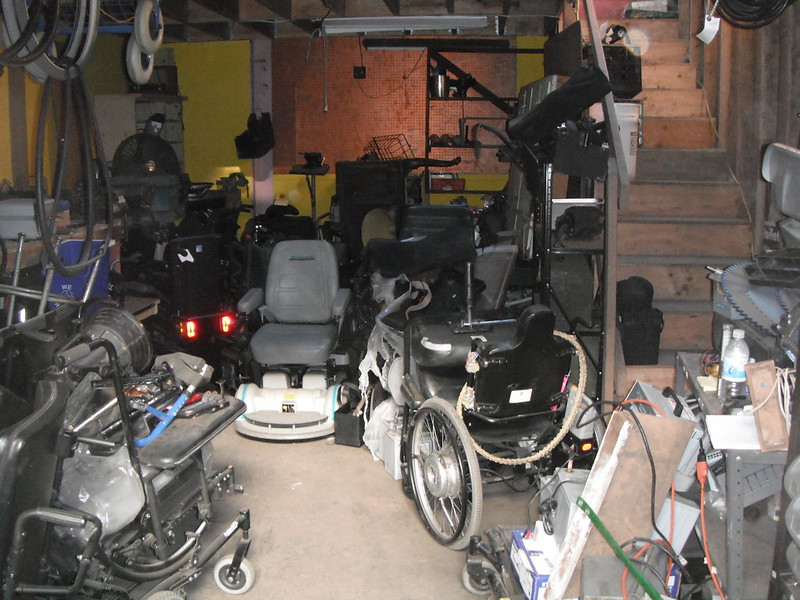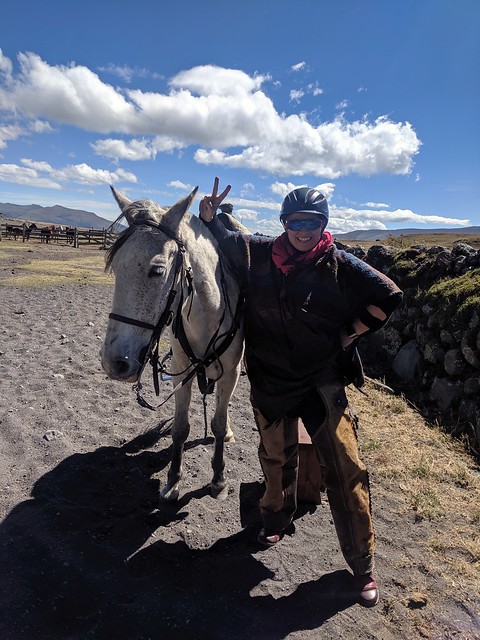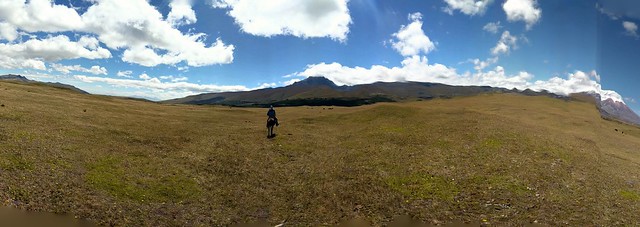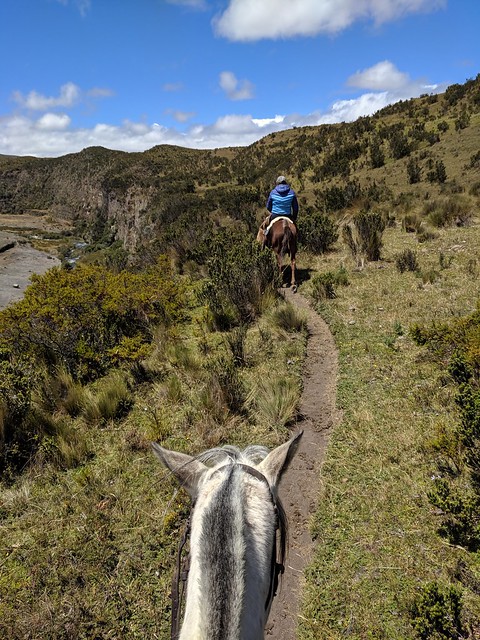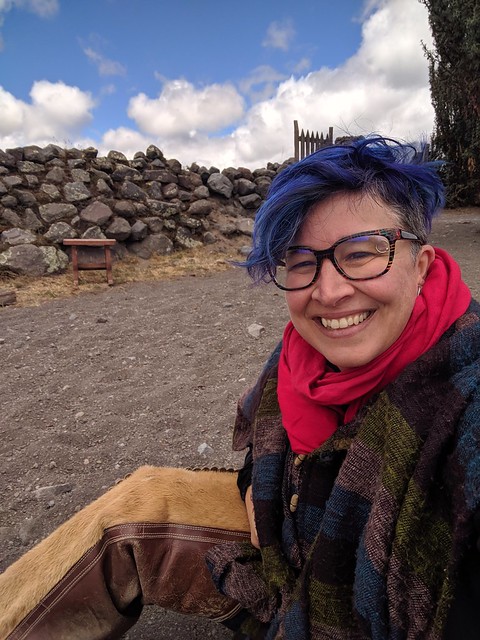I just got back from a fabulous vacation in Quintana Roo. We stayed in Tulum, in a small, funky, beachfront hotel zone, and then in Akumal. There is a lot to say about the trip but first of all, here are my notes on access, since that’s what I was looking for when I was planning the trip. This will be a Very Long Post!
My hopes were for warm water, beach access to calm water for easy snorkeling, small hotel right on the beach, and some scope for scooting around that wasn’t just in a single hotel. Both hotels I contacted in Tulum and Akumal were happy to explain the accessibility. Neither hotel was completely wheelchair accessible; what I wanted was just reasonable possibility that I could walk a few steps and be on the beach, and also that I should be able to leave the hotel on my own with a wheelchair or scooter. Akumal was my main goal, because I read online on some forums that a wheelchair user lives and works there and that the town has some curb cuts and ramps to accommodate them. That sounded promising!
For the flight to Cancun and back to San Francisco, United flight attendants let me put my TravelScoot (disassembled, not in a bag) in overhead bins. My partner and son took care of that. Without help, I would most likely have had to check the scooter at the gate. It was so nice to know that my scooter was going to be OK, not break or freeze in the cargo hold or be lost and was under my control. What a huge relief!!
(I do not know how anyone uses the TravelScoot duffel bag. I tried it… once… in my garage. It was like trying to stuff a floppy-jointed tyrannosaurus skeleton into a sausage casing. Not gonna happen, ever!)
Cancun airport was nicely accessible. It was extremely easy to get cabs. I had booked a shuttle ride beforehand with DiscoveryMundo. They were just outside the terminal building exit with a sign for me in a crowd of other drivers. It was a giant van we could have fit 10 people into, and probably twice as expensive as it had to be. I will just get a regular taxi when I go back. I appreciated having things arranged, though, and our driver Julian was extremely nice.
Our small Tulum hotel, Piedra Escondida, had about 10 feet of deep sand in the walkway up to the main entrance and lobby. Danny had to carry it and I walked with my cane. Once I was in the lobby, access to the indoor restaurant was flat but there was a step to get outside or to the registration area. We had to get across another 100 feet or so of sand to get to our little beach cottage, which had a tile paved porch and another small step to get into the room. I was able to bring my scooter inside and charge it with no problem. Our cottage (#6) was nicely positioned for me to get across short, maybe 10 foot stretch of deep sand to a grassy area I could more or less scoot over to the street out a back gate. It was rough but I could do it on my own (just barely).

This hotel would be reasonable for someone who, like me, can walk a little bit. And only for the most daring of manual chair or TravelScoot users or someone who does not mind getting help across the pockets of deep sand. The porch was nice enough, with a hammock, two adirondack chairs and a view of the beach and ocean and coconut trees, that I would not have minded staying on the porch quite a lot, which is what I did! The lobby was nice to hang out in, shady and relaxing. There was wireless, at least from the restaurant and lobby, and we could also get wireless pretty well from the porch but not the room. The bathroom was not wheelchair accessible and there was a shower with no bath. A nice shower though! The running water is all salt water. You get bottled water from the hotel or the mini mart to drink and brush your teeth with.
The restaurant for the hotel was good, a bit expensive, but very nice food, lovely people, right on the beach and outside, with wind screens up.
There was a constant warm breeze, more intense at night, which seems normal for this part of the coast for April. I am always cold where I live in San Francisco, despite wooly socks and long underwear. It was nice to hang out all day long in nothing but a bathing suit and sun dress or skirt.

My forays into the street were fun but of fairly limited scope. There was a short stretch of hotels, restaurants, small shops with textiles and beach towels and souvenirs, and a very nice minimart. I bought a rainbow flowered iipil (the kind of pretty white embroidered thing that in Texas, if dress length, was colloquially called “a Mexican dress”) and some flip flops in the kiosk next to the minimart. There were ATMs and a couple of kiosks where you could book tours or get advice, maps, and so on. They were both helpful. There was a very short and not very well ramped stretch of sidewalk in front of two restaurants but other than that I was scooting in the street along with a lot of bicycles and some cars and trucks. It was easy to get a taxi any time of day or night. South of our tiny strip of businesses and beach and tall trees, there was a rocky sea wall or pile of riprap along the little road, no trees, hot and dusty. I did not go past this sunny stretch of road to the main beach of Tulum’s hotel zone where I think there are a LOT more small boutiquey hotels including some gay nude ones and a lot of people who do yoga and more restaurants. None of the hotels in the “north” bit of the hotel zone, where I was, had good access to the street for a wheelchair user, but again, they all seemed vaguely doable for someone who can either walk a tiny bit or who can power through some gravel in a manual chair.
I walked onto the beach I think three times. It was a little bit steep for this to be easy for me. In short it was difficult. The water was rough. I am a skilled swimmer still (if not strong any more) and very good in ocean waves from a lifetime of enjoying bodysurfing and boogie boarding. But the deal breaker for me was uneven footing and shifting sand underfoot and also, rocks. I had short dips into the water but could not swim around as I would have liked. It was still relaxing and awesome to be there. There were iguanas! I also spent a lot of time watching the magnificent frigatebirds and brown pelicans glide overhead. Danny practices his ukelele a lot, and we all read constantly on our Kindles.
Tulum Pueblo itself looked interesting. It was maybe a half hour (or a bit more) walk away from our hotel, with a very nice sidewalk and bus stops along the way. I did not get to explore the town. Many people in the Hotel Zone (or, as I thought of it, the Gringo Zoo) rented bikes to get to the town and its reportedly great restaurants. It was just too hot for me to want to go that far and a bit too much bother to get a taxi to town with the scooter. And so easy to eat at our hotel and the Mateo’s Gringolandia Grill or whatever it was, across the street (which was very nice, relaxing, had good food and live music; possible to get into without a step if you went through the gravel parking lot; with one step if you went from the tiny stretch of sidewalk).
We had two day trips out in taxis. One day we went to the Tulum archeological site, aka the ruins of Tulum. I read up on Tulum’s history, online and in several books, and was excited to go there because it was one of the places I had read about and seen in engravings a long time ago from my dad’s books by John L. Stephens with the engravings by Catherwood. (Alternate universe Liz, I think, would have hopped on the translating Mayan glyphs train at University of Texas in the 80s, when they were starting to make major progress. I had that dream!)
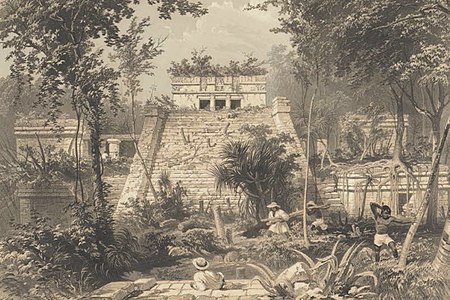
I read Friar Diego de Landa’s “Yucatan: Before and After the Conquest” in the Dover edition with an interestingly socialist introduction from the 1930s. I have read the Michael Coe Maya book several times in the past but did not re-read. (I will do that now, though.) Other books — Tulum: Everything You Need To Know Before You Go To the Ruins, which I would say delivers well on its promise. It has some of the history of the area ancient & recent, including explanations of the recent development of the area. I really liked this book a lot, enough to want a paper copy of it. Another excellent book: Maya for Travelers and Students: A Guide to Language and Culture in Yucatan. I went through it and wrote out all the Mayan words and phrases, eventually making a set of flash cards as I hung out in the hammock gazing at the ocean. I may continue learning Mayan. More on the history of Tulum, and on language, later in another post. This is supposed to be about access!
So, the Tulum ruins. After a 10 minute ride we got dropped off by a taxi driver at a quiet entrance on the coastal road side of the ruins. From there we went down maybe a quarter mile or less of flat, not too gravelly, path. The entry ticket booth is accessible and so were the truly palatial bathrooms at the entrance. Past the ticket line you can get a coke in the gift shop provided that you can walk up a step, or can fly. There was a cool diorama just past the entry, then some hard limestone paths, a little gravel but not a problem, to the world’s scariest steepest ramps ever. I appreciated that there were ramps, as otherwise it would have been a lot of stairs. The TravelScoot took the steep, corrugated slope like a champion. As it only has one motor in the hub of the left wheel (one wheel drive) it helped, going up, to lean heavily to the left. If you cannot do this, or are in a manual chair without someone to push and you are not a Paralympic athlete, you will be toast. Toast!
Once up the scary-ass ramps there were some signs and then a flight of many steep stairs to the Cenote Tower. I did not try that. Instead I went through the Northwest Gate in Tulum’s walls. Much of the paths in the central area were pretty flat and lightly graveled with a hard limestone surface underneath. I think my butt is still bruised from this foray into Bumpy Road land. I went up to the beach view of the main “castle” building and the Temple of the Descending God but it was steep and gravely and lumpy and sandy. At some point I stubbornly plowed into deep sand, and Danny had to carry my scooter out while I hobbled (a scene we were to repeat several times over our week long trip as I am often imprudent). The beach was closed off since turtles nest there. There was no way I could go up the hill to the Castillo. Oh well! Plenty of other ruins to sweatily look at and Ingress portals to hack. Danny scouted the exit at the Southwest door, or gate, which had stairs. Beyond it were some more sand and stairs and a bridge and more stairs to the real exit. We opted to go back the way we came. I zoomed down the scary corrugated steep ramps past wide eyed other tourists poking each other and gasping out things about the lady with the “moto”.
So: Tulum ruins. Doable, barely, for a wheelchair user if you have a powerful motor, big tires, or are very strong, or have someone to push you who is quite strong and heatstroke-proof. There is not a lot of shade in the central ruins. There is a lot of cool stuff to see in the bits where the path isn’t hilly or sandy. It helps to have a guidebook or just look stuff up on your phone if you have a good data plan (which is what I did, as well as playing Ingress like a total fool). Without the background you might just be like, OK there are some big ruined buildings here, pretty cool. With some of the history I think it is much better. Tulum was a sort of trade port and was founded in a sort of Warring States period around 1200 AD. The walls were because of that situation persisting over hundreds of years, with nobility living within the walls and most people living all over the surrounding area.
From the exit there was a little (free) motorized open bus shaped like a train, not accessible. As usual, we climbed onto it and Danny and Milo carried my scooter up. No one objected. The train decanted us into a giant parking lot area with booths of crafts, textiles, onyx chess sets, coconuts, a Starbucks, and little restaurant-cafes. It also had a very tall, maybe 70 foot, metal pole with guys on it doing something ritual and very acrobatic and amazing to the sound of drums and flutes. They turned out to be Los Voladores de Papantla. I donated some money to the guy who explained it to me. My Spanish is rusty but was really not too bad, the whole trip, and I could communicate complicated things well — just a bit ungrammatically. Anyway, respect to the Voladores and their ritual. If you read through some info on them you will see some of their history and controversies like whether women are allowed to become Voladores (yes in some areas, no in others). I bought a black sundress with cut lace inserts to wear on the beach, a mayan calendar tshirt for Milo, bow and arrows set with stone tips for my stepdaughter and nephew, a small, gorgeously woven bag and a beach sarong thing with turtles on it, and god knows, I cannot remember what else, but I bought a hundred dollars worth of it. This artesanal courtyard / flea market/ parking lot was hot and there were some vendors with hustle all around; I cruised around saying hello but remaining non committal until I had looked at everything. As usual there were some sidewalks but also lots of areas with light gravel, bumpiness, or a step (like to get into the starbucks). I found it very pleasant sitting in a little cafe where the trains stop (no step!) drinking from a coconut and eating fish tacos with Milo and Danny. We hung out there feeling like insiders as we watched several cycles of the trains pull up at which all the cafe guys would pop out with coconuts to entice the thirsty tourists from the ruins. I picked that cafe because it was playing Celia Cruz oldies. The food was great and not expensive. I asked to eat the inside of the coconut expecting they would just break it open and I would scoop out the inside. Instead they brought me the insides already cut up in a giant martini glass with a lime and hot sauce. So delicious!!
We went the next day to Xel-Ha. Despite reading about it online I could not picture what it would be like. It is a giant eco-theme park which reminded me in size and scope and some of the trappings, of the San Diego Wildlife Park. It is huge! But not as constantly scripted feeling as, say, Sea World. I got a discounted entry for being disabled. Entry is expensive, about 90 bucks per person. But that is including food and drink and the snorkeling equipment rental. This whole park was nicely accessible in many ways and very well organized. Entrances to things were level. There were accessible lockers and bathrooms everywhere. The lady at the ticket booth gave me a really really nice access map of the park, with paths of level access, slightly difficult access (i.e. bumpy path) and really not gonna be accessible paths, marked in green, yellow, and red. So nice! It was like a dream map!
It took Milo and I a bit of time to figure out how things worked. We left Danny (not a swimmer) in one of the many palapa-shaded restaurants where he hung out (he later got a massage at the aromatherapy spa). There are various locker rooms in the park which are color coded. We picked the purple station. You check in with your wristband, pick up swim fins, a mask, and snorkel, and get a locker key with a color coded lanyard. We left most everything in the locker but I had a beach bag for towels and stuff. They also give you towels and I think a bag, if you ask. But I had them already. Lifejackets are at the water’s edge. The park stretches around a huge, shallow, calm lagoon, and all the way around, there are many places where you can get into the water, usually by a couple of steps with handrail. I did not check to see if and where the level water entrances were.
We got in the water in several places over the day. I preferred the areas nearer to the ocean, where the water was salty and clear. We saw a zillion fish including a barracuda (omg). I did not have to swim any distance at all to see fish and most of the time didn’t wear the fins (which kind of hurt my ankles) With a lifejacket I could float around and just watch fish go by. In the freshwater end of the lagoon the water was more murky, there were more fish, but also more floating weeds and you couldn’t always see the bottom, which I find irrationally scary. (Much of the time as we got in or out there were people having panic attacks on the steps, to be honest.) No one bothers you about anything, you are free to roam around, snorkel, get out, swim, whatever.
There are special photo spots set up throughout the park where you can push a button and your photos get taken automatically and I think uploaded to a usb drive which you take with you. I didn’t look at the details of how it worked. It seemed well thought out.
There were dolphin, manatee, and sting ray encounter areas which you had to pay extra for. If I went back, I would do the dolphin swim. There were a lot of buffet restaurants, stands where you could just grab a cup and quickly fill it up with soda, shops everywhere, bars, and shady seating areas, a “hammock jungle”, a giant playground (not accessible – it was over sand) with short slides into the lagoon and one of those wood and rope kiddie-habitrail systems up in the trees. There is a long path and also a shuttle bus to the head of the river mouth where you can float down into the lagoon in giant tubes.
Fun but very exhausting. The park is HUGE. We only saw maybe a quarter of its paths and things.
The next two days I laid on the porch in Tulum eating cookies from the Mini-Super Pipienza, writing out Mayan flash cards, looking at birds and the ocean and trees from my binoculars, and taking pain meds.
Onward to Akumal. Akumal was like 1000 times more awesome than Tulum for me. Our beach cottage was extremely nice, bigger than our actual house in San Francisco, had a kitchen, 2 bedrooms, a huge patio, a paved walkway that got me 3 steps from the beach and to another hard limestone walkway (the Akumal Trail). The cove is full of boats, people, the beach is also the public town beach, so is very lively. There were more birds. We had a little semi-private corner of the beach with lounge chairs, and interesting rocks to look at. The point had cannons from a Spanish shipwreck from the 1600s. It was very nice to wake up at 6am, make my own coffee and some toast, and scooter myself the 50 feet to the tiny beach. From the paved bath to the cottage, there was a single step…. there was a step inside the cottage as well. To get onto the beach there were 3 steps with handrails. The beach is nearly flat, and not wide, so from the steps (and the dry sand area – the tide doesn’t vary much) it was only maybe 20 feet to get into the water.

From the path I could go on my scooter to the Centro Ecológico, many small shops and restaurants, dive shops for equipment rental, a whole other hotel (I didn’t go that far but it was clearly possible) and then out the little road, or on a public access path, to the Akumal beach archway (the “arco”). Outside the archway was my favorite haunt, the Super Chomak Minimart where the other wheelchair using lady in town supposedly worked, though I never did see her and I felt a little too shy to ask after her. You can buy staple groceries there like fruit, potatoes, bread, pastries, cookies, juice, butter, milk, and any sort of thing you would want for the beach including clothes. Sorry to go on about the corner store but I do love a corner store. The women who work there feed the stray cats (which are numerous and a bit mangy) and they are very nice.
Accessibility was not perfect, ramps steep or bumpy, paths a bit rocky. But navigable in a manual chair. I could have done the whole thing in my Quickie Ti (if I had a bit more stamina).
The path to the point, less than a city block away from our casita, had parts with deep sand. Danny carried my scooter across them and I hobbled. Then we went on a very bumpy rocky path around the point where there are tide pools. Tantalizing. I don’t have the stamina and should not have tried to go down this difficult, exhausting path just to see what was there! I am somewhat covered in bruises from the whole trip, I have to say.
The Lol-Ha restaurant was super nice. Part of it is a Thai restaurant and part is local cuisine. The access to the outdoor bit was very nearly flat but there was a tiny …. maybe inch and a half high …. bump into the restaurant. The indoor part had a steep ramp, too steep for me to get up on my own, I think. The food there was great. I also had very good fish at La Cueva del Pescador and nice but somewhat blander fare at the Turtle Bay Cafe, both wheel-able through some mildly gravelly paths. There were mariachis in the evening roaming about, including a group with an arpa who played joropos, which made me super happy.
The important thing was, I could get around the entire area without stalling out on gravel or sand!
With the scooter, also if I were more into sitting up and scooting around, I could have gotten across the highway into Akumal Pueblo itself, which is tiny but I think would be nice to have a look at. People recommended restaurants there but mentioned it is not particularly scenic.
Milo and I rented snorkeling equipment for 2 days. The water was calm, sand perfectly shallow and gently sloped, water clear. I really liked that we could just go in the water to snorkel any time with no fuss at all. We saw so many turtles! Fish! Sea urchins! Mostly green turtles, and one Hawksbill turtle.
This bit of Akumal beach has many tour groups coming through as well as being the public town beach (free to residents). So, people start arriving on buses around 10am and go into the water with guides in groups of 8 people. There is some limit on how many snorkeling groups they let into the water at once and I think a daily limit on the number total per day. It was a lot of people but it seemed well handled and there is an orientation video in the Centro Ecológico that explains the rules about not touching any coral and staying well back from the turtles.
I played with some local kids one day (mostly by giving them all the floaty rafts from the hotel) and had slightly wistful thoughts about how much I would like to really play, but it being better on all levels to stay back and just enjoy their lively energy and happiness. It was frustrating also not to get to snorkel as much as I would have liked, which would be ALL DAY. When I was a kid I would stay in the ocean for hours until my lips turned blue and my grandma would make me get out. I have nice memories of lying down in the warm sand and I still like to do that, just getting covered in sand and getting my face right up to it. I do not like to stop doing things when they’re fun and exciting, obviously. At Akumal I never felt cold at all (amazing) but even taking a ton of pain medication (for me, a ton, not really a lot on the big scale of things) I exhausted and hurt myself swimming around and trying to walk more than I should. With a longer stay I could swim short amounts several times a day and rest more with less excited (self imposed) pressure to scout around and “see everything”. So my plan is to try to go back there for a few weeks at a time, maybe this summer, work from there, and swim a lot. There was decently fast internet which seemed quite reliable. It would be ideal rehab for my ankles and general strength, if I managed the pacing correctly.
I noticed in driving through Playa del Carmen (a lively, large town south of Cancun) that a lot of the sidewalks had curb cuts. It would be fun to go there and cruise around.
One last problem I had was that snorkeling has the temptation, if not the requirement, to look ahead of you and my neck and upper back do not like to do that. I am too stiff to do it well. I got along ok by swimming a modified sidestroke, mostly floating in the life vest, or by going on my back, then flipping over to look straight down. My upper back and neck are still in bad pain from trying to do this.
No one gave me any hassle for the scooter or for having purple hair. Better than at home in San Francisco. Obviously people were eyeing me askance everywhere I went, but politeness or shyness prevailed. When I got to chatting at length with people I would explain: arthritis, pain, can walk a little. No one found that weird, prayed over me, acted like I was somehow too young to be disabled or wasn’t disabled enough or performing it correctly, or told me about the fish oil homeopathy their grandma’s friend does, or stuff like that, as I encounter almost daily…. People also were universally quick to explain the details of access or tell me good places to go that were relatively level. The dynamics of that very pleasant courtesy and thoughfulness may be also due to my being a rich tourist in a not very rich area that depends on tourism. I could not help but notice it though. Thank you nice people in Akumal and Tulum.
In general the whole trip was physically challenging for me (how not — I can barely do the laundry or get out of my house to get groceries in my own town!) and yet it all seems very possible now. I would feel confident going back on my own. My goal was to find a place where I can have a real vacation, not traveling by going to tech conferences or things for work, ie traveling while not only doing my regular job but also conference talks and attendance! I think that kind of travel is at least something I shouldn’t try to do for the next year or so. Or maybe ever or very rarely. Maybe that time has passed. I like traveling and I love conferences and the intensity of meeting tons of people quickly and also I love public speaking. But it has not gone well for me the last few years as my mobility is worse and pain levels through the roof. So, Real Vacation. What a concept!
Feel free to ask me questions about access in comments and I can try to answer! I hope this helps someone out when they are wondering what might be marginally accessible on the Quintana Roo coast.
